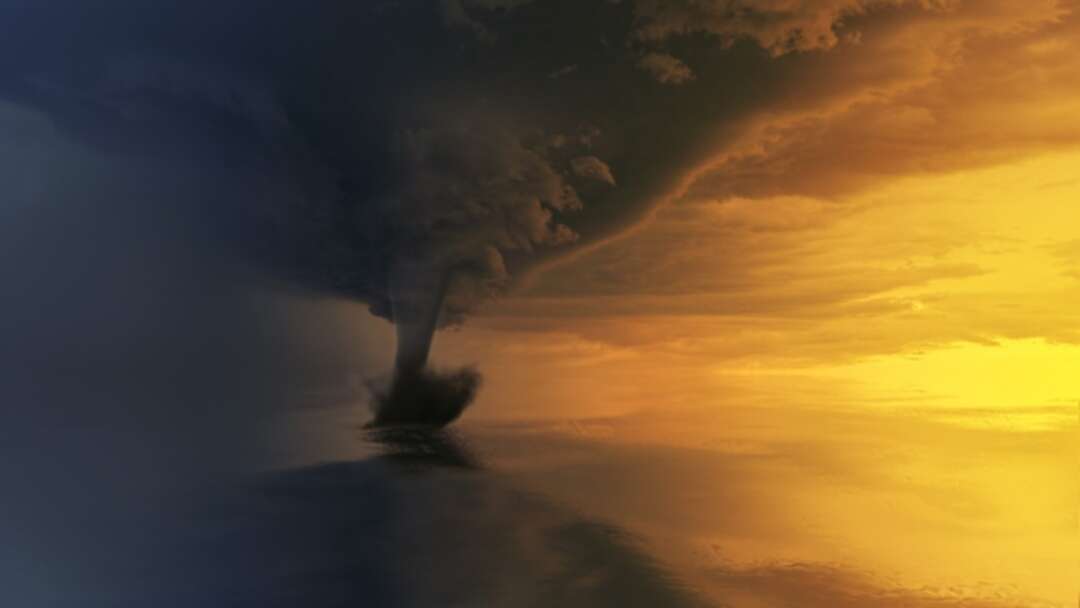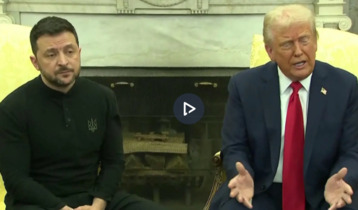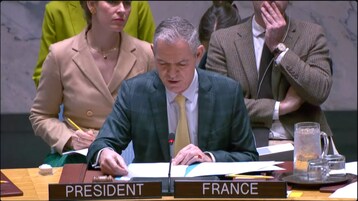-
Over 30 tornadoes tear through 6 U.S. states, wreaking deadly havoc

The Xinhua reported that The Wall Street Journal quoted Kentucky state officials as saying, search and rescue teams in western Kentucky and nearby states were combing through rubble for survivors on Sunday after a series of tornadoes ripped through the region, killing at least dozens, while the number of deaths in Kentucky alone could exceed 100.
Bill Bunting, the operations chief at the Storm Prediction Center, said that the tornadoes tore through states including Arkansas, Illinois, Kentucky, Mississippi, Missouri and Tennessee. The New York Times (NYT) quoted officials as warning that the toll, now 80 in Kentucky alone, was almost certain to rise as the sifting continued on Sunday.
 Representative image-Tornado-The Baltic Sea-Tornadoes/Pixabay
Representative image-Tornado-The Baltic Sea-Tornadoes/PixabayThe tornadoes were part of a weather system that was wreaking havoc in many parts of the United States, causing substantial snowfall across parts of the upper Midwest and western Great Lakes. State officials were still assessing the extent of the damage. Power outage has affected at least 77,000 customers in Kentucky and 53,000 in Tennessee.
Read more: Britain’s Covid-19 alert level raised amid rapid increase in Omicron cases
The National Weather Service has issued several tornado watches and warnings overnight for parts of the Midwest, including Indiana, Kentucky, Illinois and Missouri. In a statement, Homeland Security Secretary Alejandro Mayorkas advised residents to stay on alert, as severe weather remains a threat in the southeast United States.
MOST DEVASTATING
On Friday evening, more than 30 separate tornadoes moved with devastating power and speed across six U.S. states stretching from Mississippi in the south to Illinois in the north, killing over 80 people so far, including workers in a candle factory in a flattened Kentucky town, lakeside vacationers in Tennessee and a nursing home resident in Arkansas, reported The Washington Post on Sunday.
Desperate search and rescue operations are unfolding during the weekend. "This has been the most devastating tornado event in our state's history ... the level of devastation is unlike anything I've ever seen," Kentucky Governor Andy Beshear told reporters on Saturday at a late-morning news conference, calling the scale of damage "indescribable."
 US tornado/Pixabay
US tornado/Pixabay"Last night was one of the most shocking weather events in my 40 years as a meteorologist -- a violent tornado (in December!) drawing comparisons to the deadliest and longest-tracking tornado in U.S. history," tweeted Jeff Masters, a U.S. meteorologist and expert on extreme weather. The longest paths in the disaster on record topped 200 miles.
Read more: National plan in Britain to encourage higher take up of sport is needed
Calling the tornado "an unimaginable tragedy," U.S. President Joe Biden has declared a federal emergency for Kentucky, freeing up the U.S. Federal Emergency Management Agency (FEMA) assistance and federally subsidized aid. He said on Saturday that "the federal government will do everything, everything it can possibly do to help."
TORNADO ALLEY
Tornadoes are relatively localized, short-lived weather events. "In recent years tornadoes seem to be occurring in greater 'clusters,' and that a so-called tornado alley in the Great Plains -- where most tornadoes occur -- appears to be shifting eastward," reported NYT on Sunday.
"This is what we would call a tornado outbreak, where you have a storm system which produces a number of tornadoes over a large geographical area," Dan Pydynowski, a senior meteorologist with AccuWeather, was quoted as saying. However, such a large and powerful system in December is highly unusual, and something the region usually experiences in May or April.
Read more: Donors agree to transfer $280 million to support nutrition and health in Afghanistan
"It's certainly not unheard-of," Pydynowski said, "but to have an outbreak of this magnitude, with this many tornado reports -- it's a little unusual for this time of year." He said, temperatures in Arkansas and Kansas on Friday were "spring weather," and "it was unusually warm, and there was moisture in place."
Even though scientists are observing more clusters, the report: "it is unclear the role that climate change plays." "For a lot of our questions about climate change and tornadoes, the answer is we don't know," Harold Brooks, a senior research scientist at the National Oceanic and Atmospheric Administration's National Severe Storms Laboratory, was quoted as saying.
Source: xinhua
You May Also Like
Popular Posts
Caricature
BENEFIT Sponsors BuildHer...
- April 23, 2025
BENEFIT, the Kingdom’s innovator and leading company in Fintech and electronic financial transactions service, has sponsored the BuildHer CityHack 2025 Hackathon, a two-day event spearheaded by the College of Engineering and Technology at the Royal University for Women (RUW).
Aimed at secondary school students, the event brought together a distinguished group of academic professionals and technology experts to mentor and inspire young participants.
More than 100 high school students from across the Kingdom of Bahrain took part in the hackathon, which featured an intensive programme of training workshops and hands-on sessions. These activities were tailored to enhance participants’ critical thinking, collaborative problem-solving, and team-building capabilities, while also encouraging the development of practical and sustainable solutions to contemporary challenges using modern technological tools.
BENEFIT’s Chief Executive Mr. Abdulwahed AlJanahi, commented: “Our support for this educational hackathon reflects our long-term strategic vision to nurture the talents of emerging national youth and empower the next generation of accomplished female leaders in technology. By fostering creativity and innovation, we aim to contribute meaningfully to Bahrain’s comprehensive development goals and align with the aspirations outlined in the Kingdom’s Vision 2030—an ambition in which BENEFIT plays a central role.”
Professor Riyadh Yousif Hamzah, President of the Royal University for Women, commented: “This initiative reflects our commitment to advancing women in STEM fields. We're cultivating a generation of creative, solution-driven female leaders who will drive national development. Our partnership with BENEFIT exemplifies the powerful synergy between academia and private sector in supporting educational innovation.”
Hanan Abdulla Hasan, Senior Manager, PR & Communication at BENEFIT, said: “We are honoured to collaborate with RUW in supporting this remarkable technology-focused event. It highlights our commitment to social responsibility, and our ongoing efforts to enhance the digital and innovation capabilities of young Bahraini women and foster their ability to harness technological tools in the service of a smarter, more sustainable future.”
For his part, Dr. Humam ElAgha, Acting Dean of the College of Engineering and Technology at the University, said: “BuildHer CityHack 2025 embodies our hands-on approach to education. By tackling real-world problems through creative thinking and sustainable solutions, we're preparing women to thrive in the knowledge economy – a cornerstone of the University's vision.”
opinion
Report
ads
Newsletter
Subscribe to our mailing list to get the new updates!






















